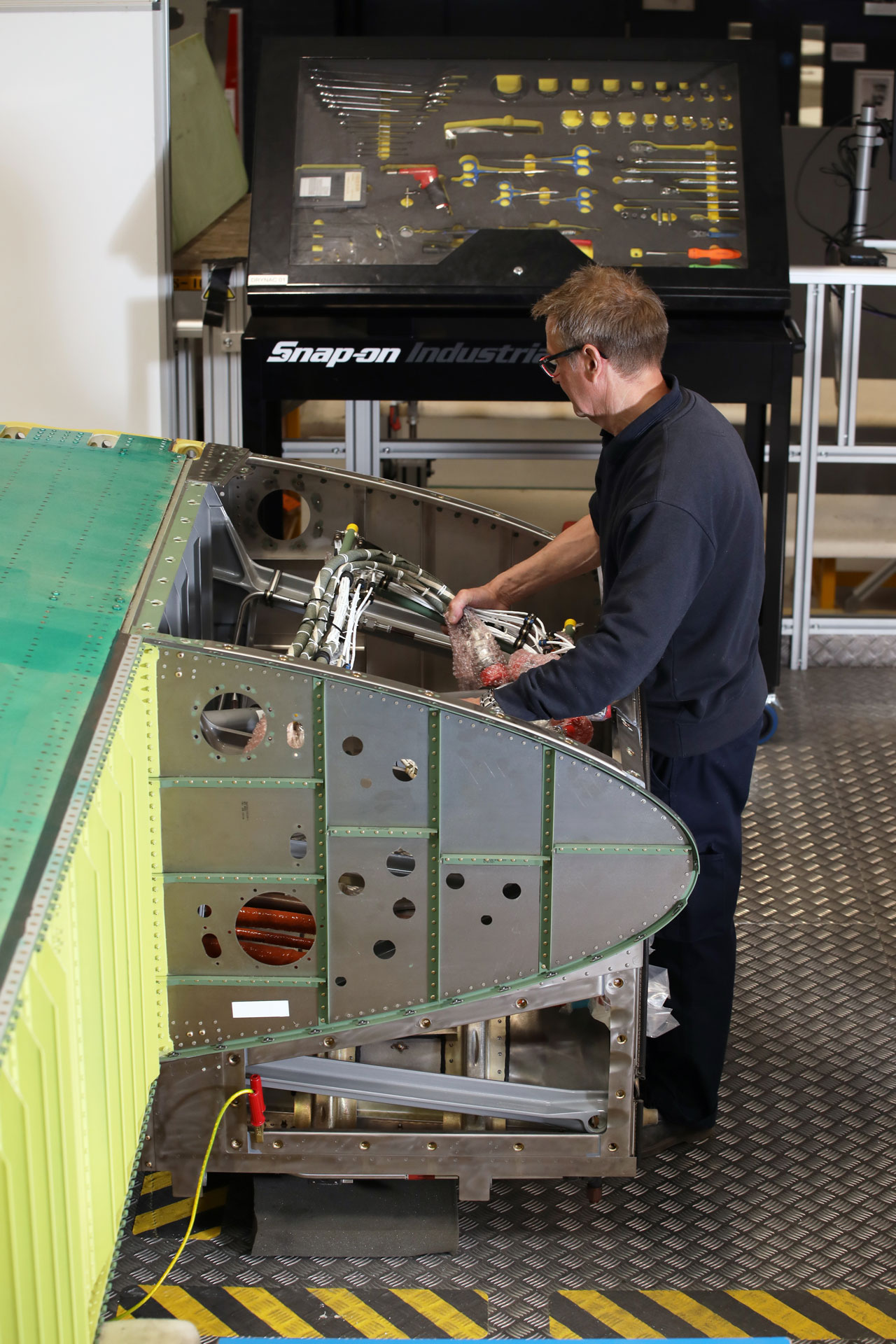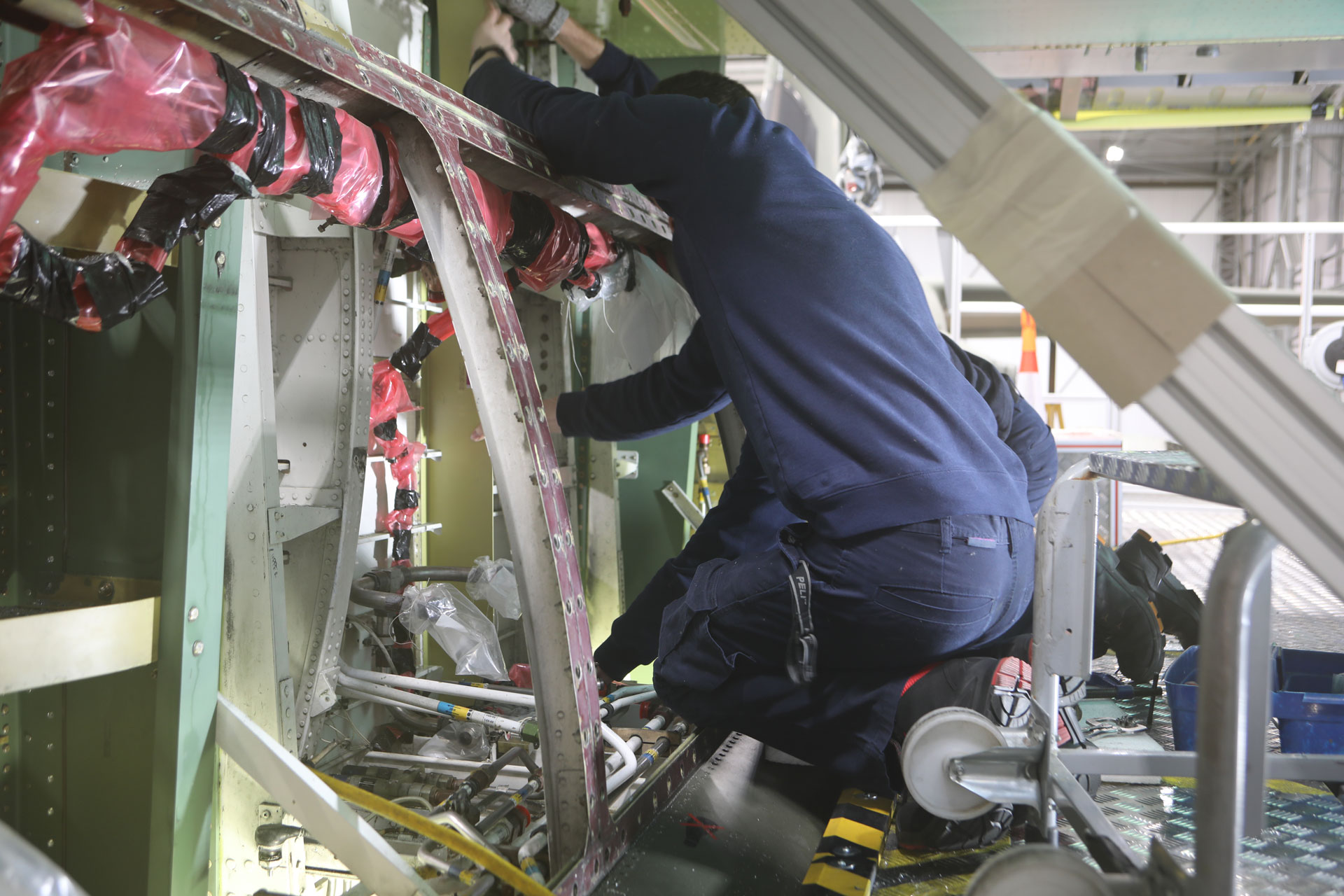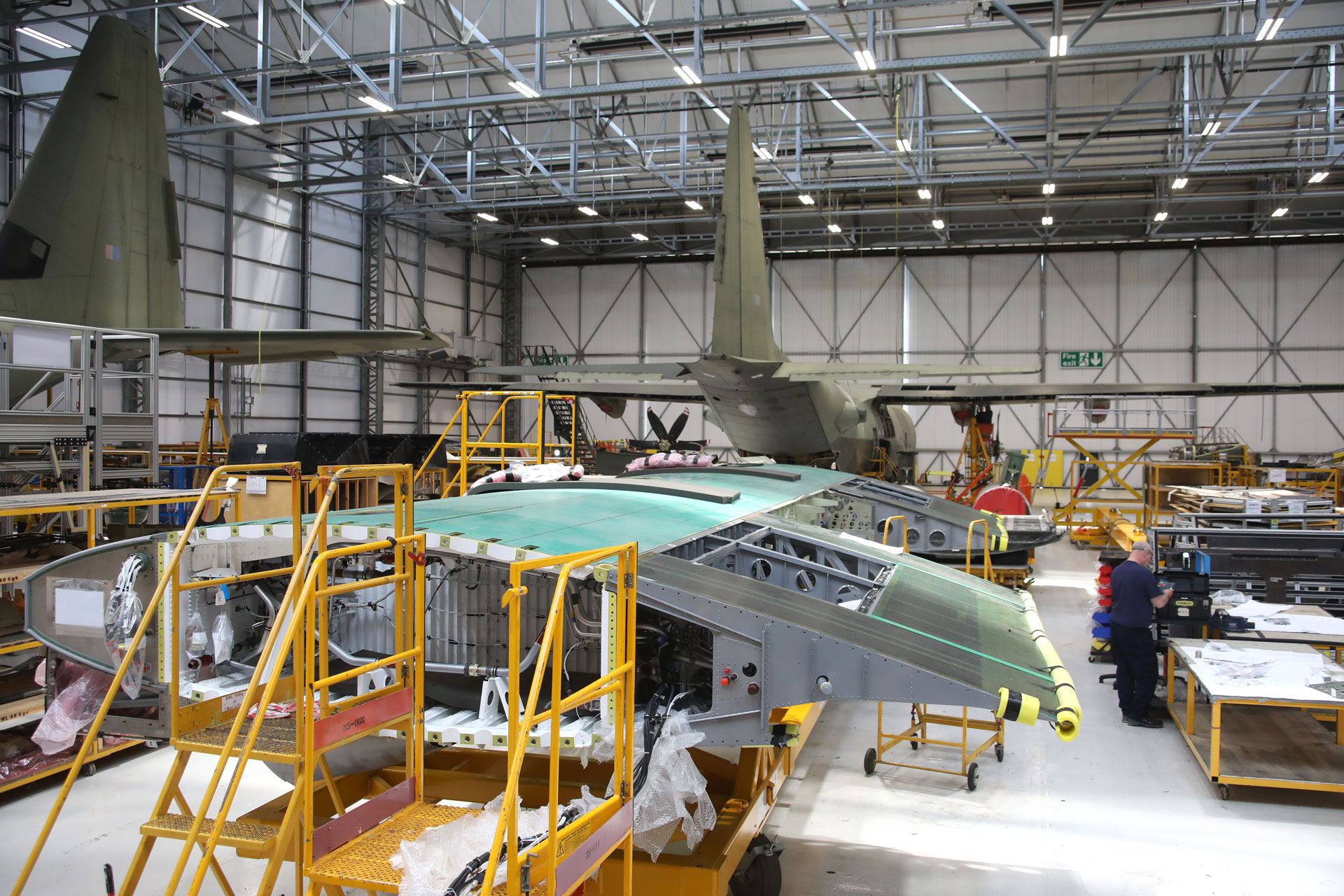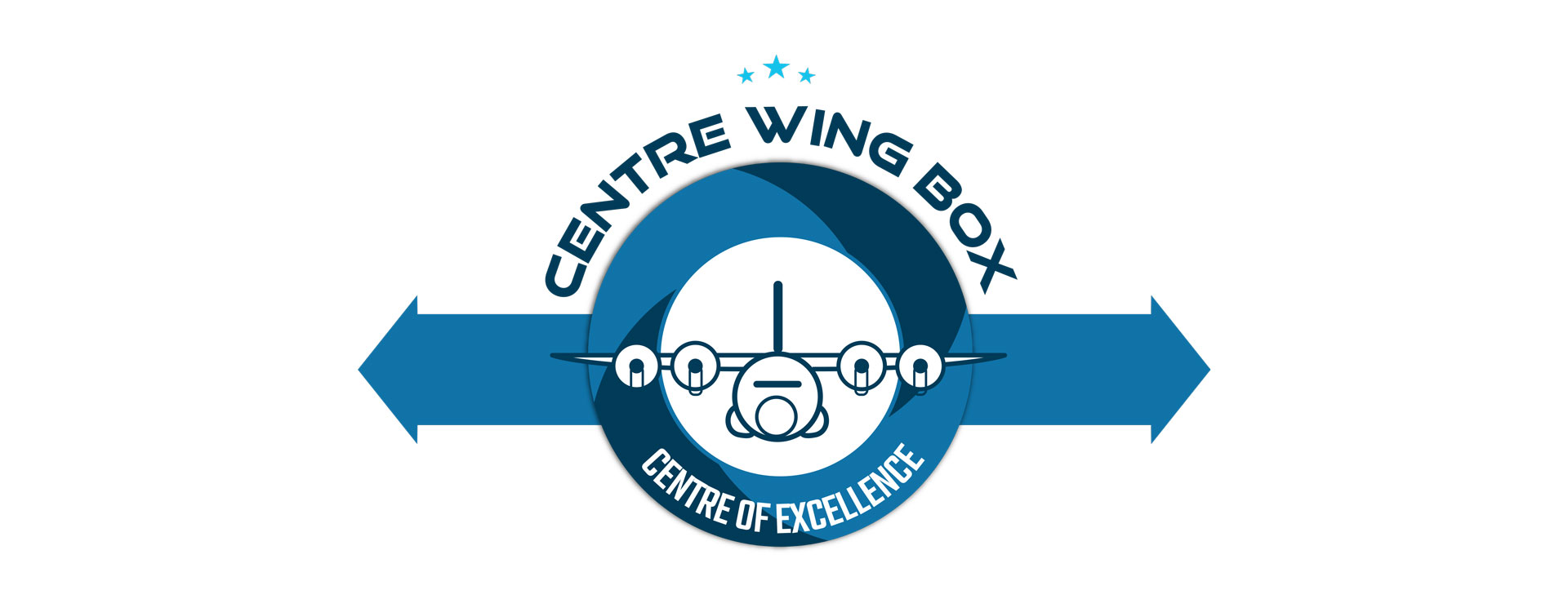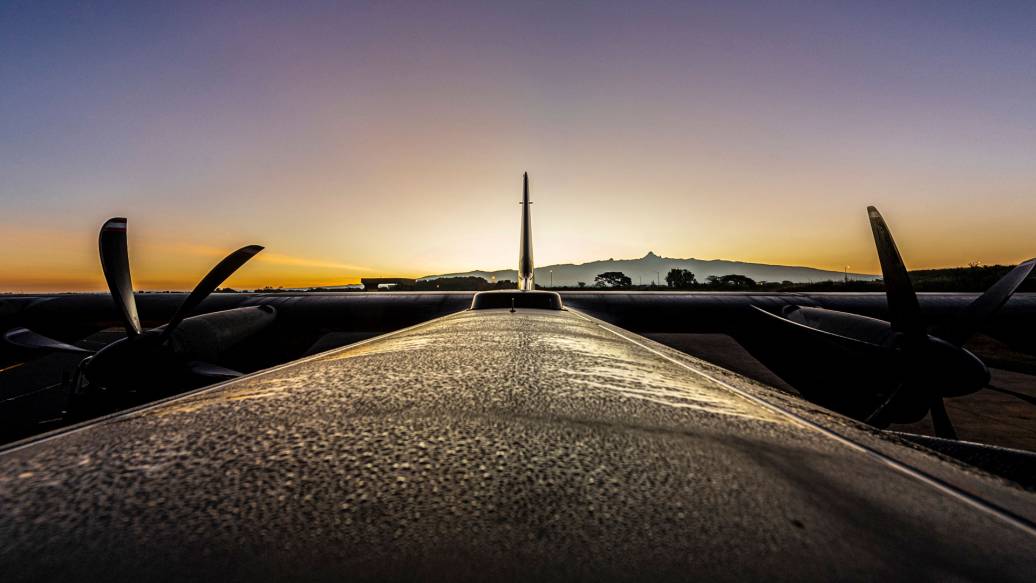
The centre wing box is a critical piece of primary structure that connects the C-130’s outer wings to its fuselage. Not unlike the shoulders of a human skeleton, it bears significant load and experiences considerable stress during operation.
Once the centre wing box’s operational limits have been reached, the entire structure requires replacement to ensure the aircraft remains airworthy without compromising safety and performance. This is a lengthy process requiring extensive experience and specialist equipment; in fact, only a few organisations around the world, including Marshall Aerospace, are trusted to undertake this work.
Here are some insights into this highly complex and challenging process that can extend the useful life of a C-130 by decades.
1. A new C-130J centre wing box lasts even longer than initially expected.
Available since 2009, Lockheed Martin’s Enhanced Service Life (ESL) centre wing was designed to extend the operational life of a C-130J Super Hercules beyond the original wing's 45,000 hour rating.
Earlier this year, new research found that the C-130J ESL centre wing has a lifespan of 122,500 hours—40% longer than initial estimates of 90,000 hours.
2. Some C-130J centre wing boxes will need replacement sooner than others.
The centre wing box’s lifespan is defined in terms of equivalent hours (EH), a metric calculated by multiplying actual flying hours by a severity factor.
If an aircraft’s usage patterns are particularly demanding, its severity factor will be higher than 1, meaning each flying hour reduces the remaining life of the centre wing box by more than 1 EH. These aircraft will require centre wing box changes after fewer years in operation.
Flight duration, cruise speed, cruise altitude, pressurisations, weight and landing types all contribute to an aircraft’s severity factor.
3. Work can begin on a new C-130J centre wing box before the aircraft arrives.
Marshall takes delivery of “bare” centre wing boxes from Lockheed Martin. Components, trailing edges, wiring and pipework are shipped separately.
Preparing the new centre wing box (known as “dressing”) takes thousands of hours and adds more than 1.5t to the structure.
4. We conduct laser measurements 8 times during each C-130J centre wing box replacement.
To ensure the aircraft is correctly aligned and remains steady, we carry out full positional laser shoots throughout the centre wing box replacement process, using equipment developed at Marshall for the C-130J.
Measurements are taken and recorded at reference points all along the aircraft, with some tolerances as strict as 0.001 inches (0.025 millimetres)—less than the width of a human hair. The results are sent to Lockheed Martin for review and validation.
5. C-130J centre wing boxes are “pushed” out from underneath.
Having disconnected any interfacing parts and structures, Marshall uses bespoke floor-mounted jacks to apply upward pressure, shearing off any remaining sealant and releasing the centre wing box from the fuselage.
Approximately 10t of force is applied—significantly less than the 18t exerted during our first C-130J centre wing replacements, thanks to new improvements and processes devised by Marshall.
To prevent movement and absorb load, the aircraft is secured to custom-engineered tie-down points attached to reinforced steel floor plates.
6. We spend months checking and replacing parts and structures connected to the C-130J centre wing box.
Removing an end-of-life centre wing box exposes a large amount of interfacing structure including beams, webs, drag angles, pipework and wiring. Usually, we discover significant cracking, corrosion, warping or wear.
Marshall’s team conducts thorough visual and non-destructive inspections, and rectifies every defect discovered—either through in-house repair schemes or with support from Lockheed Martin.
Structural replacements of existing fuselage ordinarily take two months before the new centre wing can be inserted. During this time the aircraft is held in place with belly trestles and tie-downs and is supported by internal bracing structures.
7. It can take a week to correctly position a new C-130J centre wing box.
When a new centre wing box is installed, it is initially “dry-inserted” (meaning there is no contact within the fuselage) and measured with lasers to ensure accurate positioning.
We then remove the new centre wing box once more, apply slow-setting sealant to the main faces, re-insert it and clamp it into place using specialised tooling developed in-house by Marshall.
Further laser measurements are taken to ensure positioning is correct to within 0.001 inches (0.025 millimetres). Due to the tolerances involved, micro-adjustments are carried out over a number of days until correct positioning is achieved.
8. Marshall can complete a C-130J centre wing box replacement four months faster thanks to in-house improvements.
Marshall has now completed nearly 80 centre wing box replacements on both legacy C-130 models and the C-130J Super Hercules.
Over time, we have made numerous in-house refinements to make the process significantly less risky and more efficient, including development of bespoke staging, trestling, jacking, tooling, drilling processes and repair schemes. While these are unique to Marshall, they have all been reviewed and approved by Lockheed Martin.
Our first C-130J centre wing box replacement took 14 months; our most recent was completed in just 10 months.
9. A C-130J centre wing box replacement is much more than a “new-for-old” component swap.
Marrying new structure to a decades-old airframe presents unique challenges.
After many years in service, no two C-130 airframes are identical. Issues such as structural drift, cracks and corrosion become more pronounced over time.
Since a centre wing box installation is effectively a rebuild of a large section of the aircraft in line with manufacturer specifications, the fuselage must be brought back to original production tolerances, with much of the structure re-assembled to “as-new” condition.
10. Lockheed Martin only recognises one C-130 centre wing box centre of excellence.
Marshall has an unmatched track record of centre wing box changes, backed by in-house innovations to improve the process, dedicated facilities and a highly trained team.
To date, we remain the only organisation outside the United States to have successfully completed a C-130J centre wing box replacement.
These achievements have earned us formal recognition as the world's first authorised Centre of Excellence for C-130 centre wing box replacements—a testament both to our engineering capabilities and to the strength of our relationship with Lockheed Martin.
Learn more about our C-130 centre wing box replacement expertise
Contact the Marshall Aerospace team
